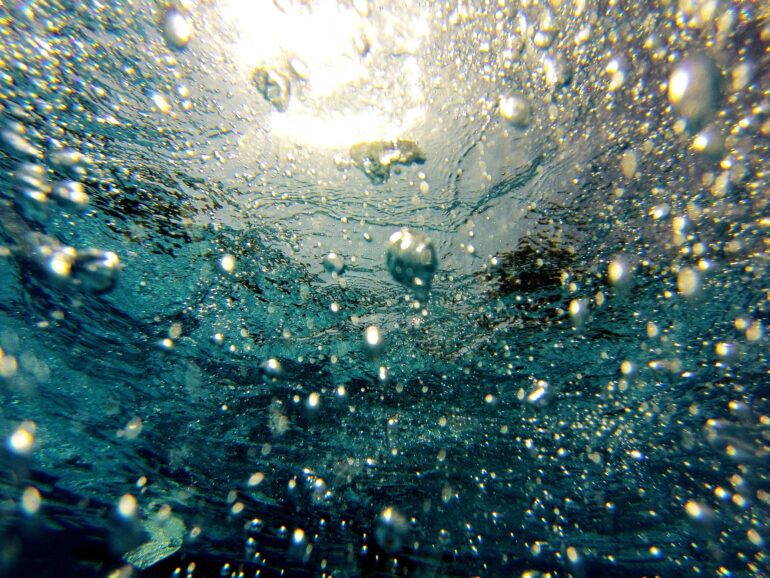TL;DR:
- Water’s ability to dissolve substances arises from its unique electrical properties, allowing it to oppose and nullify electric fields.
- Dissolving salt in water weakens this electrical response, and researchers have used AI-driven simulations to understand why.
- The AI-augmented approach enables physicists to predict and explore various settings, including batteries and fuel cells.
- Water’s dielectric constant, responsible for its solvent capabilities, is affected by the disruption of hydrogen bonding caused by salt.
- The AI-based methodology promises practical applications, such as analyzing water interactions with membranes and surfaces.
Main AI News:
Water, the ubiquitous solvent that we encounter daily, possesses a remarkable chemical prowess rooted in its electrical properties. It has the uncanny ability to counter and nullify electric fields, even those that would typically attract dissolved ions and bind them together. Intriguingly, the introduction of salt weakens this electrical response in water. A groundbreaking study, employing state-of-the-art computer simulations empowered by artificial intelligence (AI), has now shed light on the underlying mechanisms behind this phenomenon.
Physicist Roberto Car from Princeton University, not associated with the research, remarks that understanding this fundamental property of water can now be accurately predicted from first principles, thanks to the AI-augmented approach. The implications extend far beyond water’s peculiarities, with physicists now poised to explore other domains, including batteries and fuel cells.
Conductors and insulators react differently to electric fields. In conductors like metals, electrical charges can flow freely, redistributing positive and negative charges to negate the applied electric field, resulting in no field within the conductor. In imperfect insulators, however, charges can still move to some extent. The applied electric field polarizes the material’s molecules, creating a weaker internal field that partly cancels the applied one. This phenomenon is quantified by the insulator’s dielectric constant, which measures its ability to “screen” an applied field. Water’s dielectric constant is relatively high at 81, indicating that the internal field is only 1.25% as strong as the applied one. This property of water explains its exceptional solvent capabilities, as dissolved ions’ electric fields are suppressed, preventing them from recombining.
When salt is dissolved in water, the dielectric constant drops dramatically. In 1924, Dutch physicist Peter Debye proposed an explanation, suggesting that the positive sodium ions and negative chlorine ions in salt water generate localized electric fields that polarize individual water molecules to such an extent that they can no longer counteract an applied electric field. However, water molecules’ orientations also play a significant role. The oxygen in one molecule attracts the hydrogens in neighboring molecules through weak “hydrogen bonds.” These molecules tend to form transient tetrahedral clusters, aligning the polarized molecules and amplifying their response to an applied field. Unfortunately, the presence of charged ions from salt could disrupt the hydrogen bond network, hampering the molecular alignment.
Recent simulations have leaned towards the second explanation, but the issue remained unresolved due to incomplete simulations that failed to consider all effects. However, in a remarkable endeavor, a team led by Chunyi Zhang from Princeton and Xifan Wu from Temple University conducted simulations with six different saltwater concentrations. To describe individual molecules, they utilized density functional theory (DFT), a quantum mechanical approach treating electrons as continuously varying density clouds rather than particles. For the required larger and longer simulations, the researchers employed AI. One machine-learning algorithm, a neural network, was trained on high-precision DFT results to deduce forces among molecules accurately. Another algorithm reduced the electron cloud within a molecule to point-like charges placed strategically to describe its polarization. This AI-aided approach allowed them to simulate the interactions of 4000 water molecules over 10 or 20 nanoseconds, albeit taking three months on a supercomputer.
The results, detailed in a forthcoming paper in Physical Review Letters, highlight that the salinity effect primarily stems from the disruption of clustering and correlations due to hydrogen bonding. The researchers successfully elucidated how disruptions propagate through the network of water molecules, leading to a complex, nonlinear variation in the dielectric constant with salt concentration.
Physicist Yuki Nagata from the Max Planck Institute for Polymer Research hails this research as conclusive, emphasizing that it discerns all the different contributions and identifies the dominant effect. Beyond the specific findings, the AI-based methodology promises to be transformative, offering practical applications such as analyzing water interactions with membranes or surfaces. For instance, Zhang is already utilizing this approach to investigate the splitting of water into hydrogen and oxygen on the surface of a titanium dioxide catalyst, a potential method for hydrogen production.
Conclusion:
The breakthrough achieved by utilizing AI-driven simulations to understand water’s electrical properties opens up new possibilities for various industries. The ability to predict and manipulate these properties has implications for markets involving batteries, fuel cells, and other applications. Additionally, the AI-based methodology can revolutionize research and analysis of water interactions, making it a powerful tool for advancements in technology and materials. Businesses operating in fields related to water treatment, energy storage, and catalysis should closely monitor and leverage the insights generated by this pioneering research.

